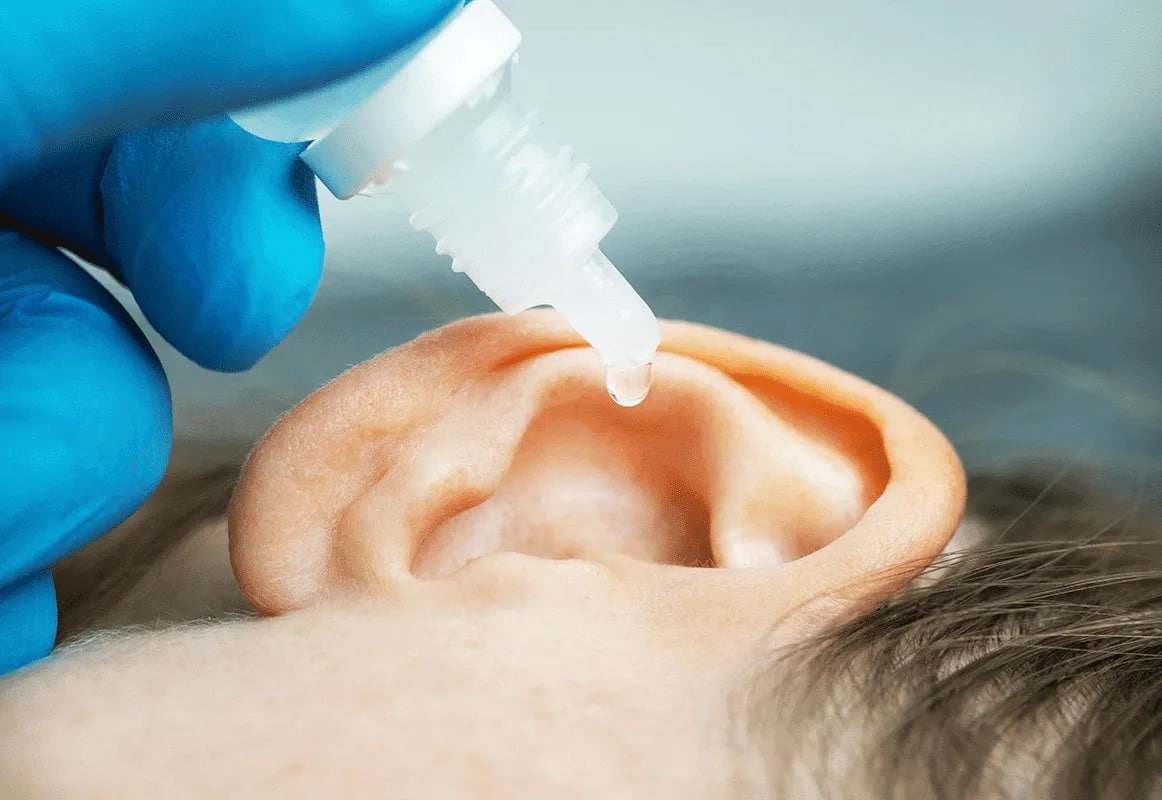13
Hydrogen peroxide is a gentle way to clean your ears. If you have an ear piercing, you can also use the liquid to support the healing process.
Cleaning ears: How hydrogen peroxide works
The ear has its own self-cleaning mechanism. The ear produces earwax, which lines the ear canal. This then forms a natural film of grease over the skin, protecting it. The greasy substance prevents foreign bodies and dirt from reaching the eardrum.
- Particles and dirt that get stuck are transported out of the ear via the earwax. This is the natural cleaning process that the ear performs on its own.
- Some people insert objects such as cotton swabs into the ear canal to remove the actually beneficial earwax. Instead of removing the earwax from the ear, they push it further and further back, blocking the ear.
- If it gets stuck, it compacts the ear. This is where hydrogen peroxide comes in. Get a 3% hydrogen peroxide solution.
- Apply the solution to the ear as described below; the solution will liquefy the earwax. After a short time, it will be soft enough to drain out of the ear.
- Notes: However, you should only use hydrogen peroxide if your ears are otherwise healthy. If you have excessive earwax production or a blockage in your ear, you should see an ENT doctor. After an examination, they will professionally clean your ear and treat it if necessary.
Instructions: How to clean your ear with hydrogen peroxide
Prepare the 3% hydrogen peroxide solution and a pipette.
- Dip the pipette into the solution and draw up some liquid.
- Tilt your head to the left and pull the right ear down (or vice versa if the left ear is affected).
- Put one or two drops into the ear canal. Leave the drops to work for ten minutes. Keep your head tilted or, ideally, lie down.
- Then go to the sink. Tilt your head to the right and let the liquefied earwax drain out. You can also perform an ear rinse.
- Repeat the process on the other side if necessary.
- You may only perform this procedure once a month.
- Please note: Do not insert the pipette too deeply (i.e., not all the way) into the ear canal. Otherwise, you could damage the eardrum. The hydrogen peroxide solution should be at body temperature, i.e., around 37 degrees Celsius. A solution that is too cold can cause disturbances in the vestibular system, which you will notice as ear pain and dizziness.
Using hydrogen peroxide for an infected piercing
If you have had your ears pierced and they become inflamed after a few days, you can support the wound healing process with a 3% hydrogen peroxide solution. In this case, the solution acts as a mild disinfectant.
- If you are unsure, first ask your piercer or dermatologist whether you can treat the piercing with a 3% hydrogen peroxide solution.
- Wash your hands with antiseptic soap and then disinfect them.
- Dip a cotton swab into the solution and dab the sore area on the ear piercing. Dip a new cotton swab into the solution and dab the edges of the wound with it.
- Then move the jewelry back and forth a few times in the piercing channel.
- Finally, apply a healing ointment to the edges of the wound.
- Important: Do not dip a used cotton swab into the bottle of hydrogen peroxide solution. It is contaminated with germs after use and should be disposed of in the trash.

